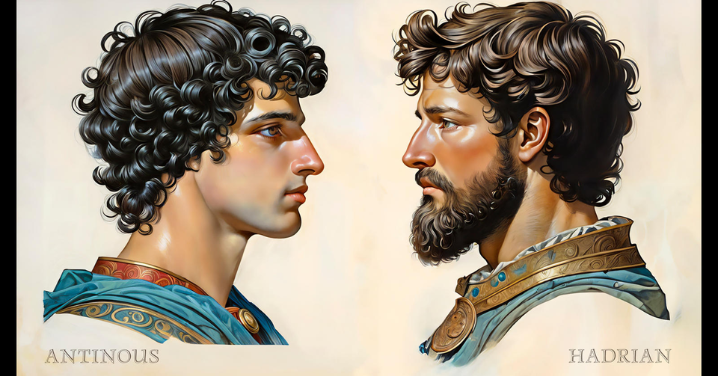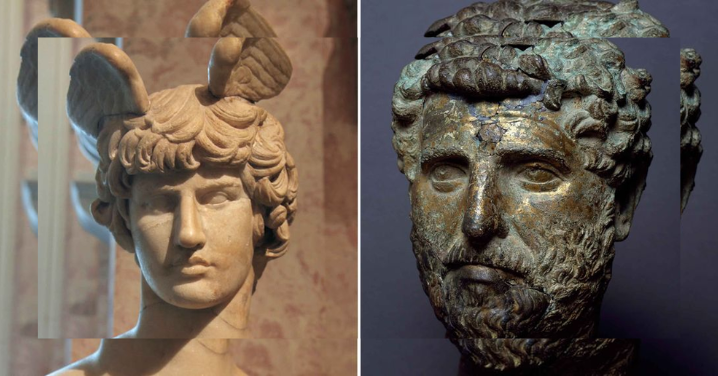
Among the annals of history, the story of Emperor Hadrian and Antinous stands apart, not only for its depth of devotion but for the profound legacy it left behind. This is a tale of love, loss, and remembrance, unfolding against the backdrop of the Roman Empire at its height. It speaks of the power of human connection to transcend time and space, immortalising feelings in monuments and myths.
Hadrian, the Roman Emperor from 117 to 138 AD, was a man of immense intellect, a lover of culture, and a ruler who sought to consolidate rather than expand his vast empire. His most enduring legacy in the modern world is perhaps Hadrian’s Wall, the formidable structure that stretched across northern England, marking the edge of Roman control. Yet, behind the stoic image of the emperor was a man capable of immense love and vulnerability, emotions brought to life through his relationship with Antinous.
Antinous was a young Greek from Bithynia, renowned for his intelligence, beauty, and athletic prowess. When Hadrian met Antinous, the emperor found in him a kindred spirit. Their relationship blossomed into a profound bond that transcended the cultural and political norms of the time. Hadrian was captivated, describing an “obsessive craving for his presence,” and Antinous became more than a companion; he was a part of Hadrian’s very soul.
Together, they travelled the empire, sharing a love of hunting, philosophy, and exploration. In one legendary instance, Hadrian saved Antinous’s life during a lion hunt, a gesture that epitomised their devotion. Their relationship was marked not only by passion but also by mutual respect and shared interests. Hadrian, a patron of the arts, expressed his affection in ways both grand and intimate, including writing poetry that celebrated their love.
Yet, their story was not without its shadow. In 130 AD, while the pair were travelling along the Nile, Antinous drowned under mysterious circumstances. The exact details of his death remain unknown. Some speculate it was an accident; others suggest it was a sacrifice, perhaps made willingly to secure Hadrian’s health or favour with the gods. Still, darker theories propose foul play, driven by jealousy or political intrigue within the imperial court. Whatever the cause, Antinous’s death devastated Hadrian.
The emperor’s grief was boundless. Overcome by loss, Hadrian ensured that Antinous would never be forgotten. He proclaimed his beloved a deity, an unprecedented act that defied Roman traditions but demonstrated the depth of his love. Temples were erected in Antinous’s honour, and a city, Antinoöpolis, was founded at the site of his death. Coins bearing Antinous’s image were minted, and his likeness was immortalised in countless sculptures, each capturing the idealised beauty of the young man who had captured the emperor’s heart.
Hadrian went further still, naming a star after Antinous, placing it in the heavens between the Eagle and the Zodiac. This act symbolised the eternal nature of their bond, elevating their love beyond the confines of mortality.

Their story is one of defiance against societal expectations, a testament to love’s ability to challenge convention and create enduring legacies. In a world where power often overshadowed personal emotions, Hadrian’s actions revealed the vulnerability and humanity that even an emperor could feel. His grief for Antinous became a driving force for art, architecture, and cultural memory, leaving an indelible mark on the ancient world.
Today, the story of Hadrian and Antinous serves as a reminder of love’s transformative power. It speaks to the courage required to cherish deeply, even when that love challenges norms or risks judgment. It is a tale of resilience in the face of loss, a tribute to the enduring impact of devotion, and a celebration of the ways love can shape history and inspire generations.
Hadrian’s love for Antinous transcended their time, influencing the art, architecture, and astronomy of the ancient world. It offers a profound lesson: that love, when held with reverence and expressed boldly, can become eternal, carving its story not just into stone but into the fabric of human memory.



